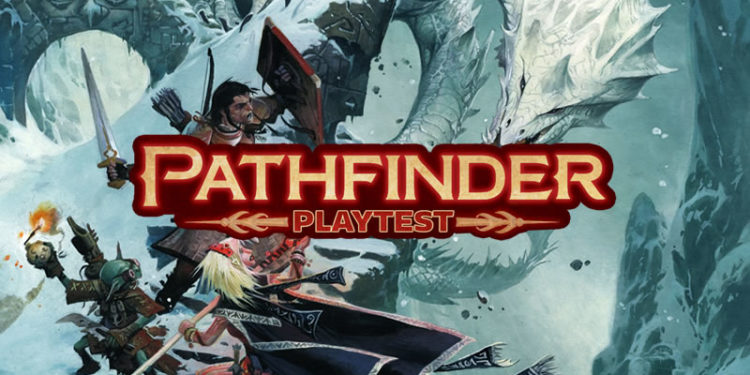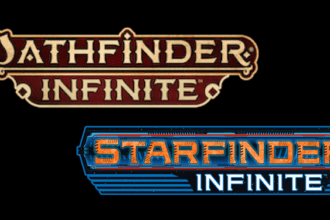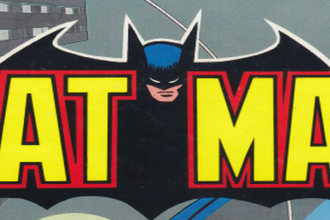Pathfinder Second Edition Playtest Breakdown, Part One

If you’ve been living in a monastic cell far from all gaming news, in which case how are you even reading this?, you may not have heard that Paizo is working on a new edition of Pathfinder. I bought a softcover copy of the public playtest rules so that I could write this series. It arrived a few days ago, while much cleverer people were picking up their copies at GenCon. Where I was. Anyway, I’m home now, and I’ll be covering this book in as much detail as I can stand.
Disclaimer
I am not the target audience for PF 2e. Presumably, its target audience is people who like ultra-high character customization and crunch. I, on the other hand, find D&D 5e’s level of customization and rules crunch sufficient. Pathfinder’s rules crunch was fine for me when D&D 3.5 and 4e were my frame of reference. My point, then, is that I’m coming to this as an outsider who likes to analyze game design, not a dedicated fan or a likely recruit. Interpret accordingly.
Chapter 1: Overview
The Welcome page explains that the new edition is about streamlining and simplifying character creation for players and NPC creation for GMs. Some content, including the alchemist class and the goblin race, has moved into the game’s core options. They’re trying a different take on making magic items exciting and wondrous. If you’ve ever read the “Why a New Edition?” section at the front of almost any game that has more than one edition, this will sound familiar. (And that’s fine.)
I’m glossing over the What is a Roleplaying Game? section, like everyone who has read more than one (core) rulebook for a tabletop game. Let’s get to the Basic Concepts and see what they’re centering as their new ideas.
Right off the bat, I see that PF dodges the Attack/attack syntax issues of 5e by replacing Attack (the action) with Strike. It always makes me happy when game designers rediscover the joy and wonder of a thesaurus. Heaven knows Gygax could have profited from one.
Much like 5e, PF2e adopts the clear understanding that scenes generally fall into three categories: combat (which it calls encounter mode), exploration, and social interaction. Social interaction is part of exploration mode until it devolves into combat. It further defines downtime mode as an area of play, for montages.
Because the text will have so many kinds of actions you can take (just as 5e does), they’ve taken an icon-driven approach to helping you know what kind of action (or how many actions) it takes: an action, a reaction, a free action, or multiple actions. In encounter mode, a character gets three actions and one reaction each round. This is an interesting move, and headed in a direction fairly different from what I’ve seen elsewhere. It shares some things in common with D&D 4e, and some different things with SIFRP. I’m curious to see how it develops. The text signals up-front that casting a spell often takes multiple actions.
Critical hits and critical failures have broadened to beating/missing the DC by 10+, respectively. Since I already know a few things about how the system handles multiple Strikes per round, I suppose this encourages you not to roll with huge penalties and just hope for a 20. But I suppose incorrectly – jumping ahead to the description of the Strike action, it has no critical failure effect. Even though that’s the action that attached the word “fumble” to “critical failure.” Strange choice, there.
The four different proficiency levels map pretty closely to D&D 5e’s four tiers of play, and govern your proficiency modifier to rolls. In essence, this is what 5e’s proficiency bonuses would look like if bounded accuracy didn’t exist. This is a scale-by-level system that also graduates the number that it adds to your level. To put all of this another way, you can be great with a sword because you’re high level, or you can be great with a sword relative to other characters of your level (i.e., you’re legendary with it, while those common rubes are mere masters). Your proficiency category also grants access to feats. This is Pathfinder; almost every positive statement you can make about a character satisfies a prerequisite for a feat or two.
“Ancestry” replaces “race.” Humans are still the only ancestry with ethnicities, though. I don’t know a lot about Pathfinder’s art, and this book includes relatively little of it, but… are humans and goblins the only races that can have skin tones other than recognizably Caucasian? (By comparison, D&D 5e text describes dwarves as usually having nonwhite skin, and proceeds to ignore that in much of the art.)
Chapter 1 doesn’t get into details, but Initiative is unusual – you don’t have a single Initiative modifier. Instead, it depends on what you were doing when the fight broke out, so a bunch of different skills could be your initiative bonus. I don’t hate that idea, though I’m also not yet seeing all of the implications. We’ll come back to this in a later article.
Rarity is another unusual feature. It’s a kind of tag that can be attached to equipment, magic items, spells, feats, and possibly other things. Without going through the whole book, I can’t yet see how they use rarity, except that it’s another potential hurdle or prerequisite for character-building options. I don’t think greater rarity means “more powerful” the way it does in, say, 5e’s (or WoW’s) magic items or a CCG’s cards, but I’ll circle back to this. They’re color-coded black, red, orange, and blue, in ascending rarity, and I have to wonder about the accessibility tests that drove that decision. Speaking as a person without colorblindness, I have little confidence that I’m correctly identifying red or orange under the very yellow light of my study. The mechanics could be fine, but the visual presentation is nonfunctional.
Character Creation
We’re still in Chapter 1 – the separate header is for your reading convenience. We’re looking at 6 (or 8, but I get ahead of myself) ancestries and 12 classes. This is the moment that I realize I have fully internalized dragonborn and tieflings as core D&D races, as I’m momentarily surprised by their absence. Sorry, haters.
I’m not sure, but I think that picking a Background is new-to-PF in this edition. I like the twist that Backgrounds put on 5e characters, so I expect to like it here as well.
Again, it’s possible that this was a feature of PF 1e, but Encumbrance has been replaced with Bulk, and the numbers have been simplified so that you’re encumbered at Bulk equal to 5 + your Strength modifier, and your maximum load is 10 + your Strength modifier.
There’s a good recognition of nonbinary and nonconforming genders here, a stance they’ll undermine badly later in the text. I’m interested to see Paizo use she/her as their default pronoun about an unspecified character in the text, rather than any other formulation.
Hero Points are a thing. You start with 1 and earn more in play.
Characters now have Resonance Points that allow them to use magic items. You have Resonance Points equal to your Charisma modifier + your level. I’m distinctly sorry to see dwarves be bad at using magic items. That seems off to me. This could really use a “minimum +0” qualifier, just so that an average starting dwarf could still have 1 Resonance Point, if they happened to find a magic item that required it.
Skipping ahead, I see that there’s a feat for Remarkable Resonance, granting +2 Resonance Points. Prerequisite? Cha 12+. This is a prerequisite that did not need to exist. It is still remarkable when a low-Cha character can use more magic items than normal.
Generating Ability Scores
Still in Chapter 1, still just breaking it up so your eyes don’t bleed. This is a service we provide here at Tribality. Tip your waiters and try the long pig veal.
Huh. Classes grant trained skills based on X + your Intelligence modifier, where X ranges from 2 (alchemist, wizard) to 10 (rogue). I’ll dig into skills more in a bit; I just found it interesting to see where they’ve dumped skill points per se, but stuck with Int as a determining factor for skills. It’s important to note that no ancestry has an Int penalty, so if you have an Int penalty, it’s either because you went for rolled ability scores (which PF2e sections off as Optional) or because you took a Voluntary Flaw (to no benefit other than your roleplaying preference).
PF2e does two things with ability scores, on a categorical level, that look like they’ll be important. First, there’s a hard cap of 18 on ability scores at 1st level. The cap goes away after that, but when you get ability boosts, they grant +2 if the ability is less than 18, or 1 if it is 18+. You gain ability boosts at 5th, 10th, 15th, and 20th level; at each of those levels you gain a boost to four different scores. Unless I’m missing something (like, I dunno, a magic item) we’re talking about a hard cap of 22, and not getting to a +5 bonus until 10th level. That’s a not-inconsiderable incentive to focus more on getting everything closer to 18 rather than specializing.
Generating ability scores is a six-step process, carefully designed to make absolutely sure that you can get an 18 in your class’s main stat as long as it isn’t your race’s Ability Flaw. You start with six 10s, and add:
- Either two boosts, or three boosts and one flaw, depending on your ancestry. Every ancestry includes one “free” boost – that is, you can assign it wherever.
- Two boosts from your Background. These take the form of “Ability score A or B, and one of your choice.”
- Four free ability boosts. The rules for ability boosts make it clear that these can’t go into the same stat.
- One ability boost in your class’s key ability.
Alternately, you can roll 4d6, drop the lowest, arrange to taste, and apply only your ancestry and background modifiers. These approaches generate higher ability scores than 5e’s defaults, and it’s hard to imagine that they won’t be pretty samey. Like I said, unless you’re deliberately playing a class that your race is bad at, only sandbagging would stop you from having a starting 18 in your key ability score. Good for getting the game’s math to be precisely where you want it to be; bad for variation between characters.
Chapter 2: Ancestries and Backgrounds
How about that, ancestries provide a baseline number of hit points in addition to your hit points from your class. I am glad this is here – the fragility of 1st-level characters and 1st-level play is more bug than feature to me. Sometimes you want an ultra-gritty game where only characters who survive inconsequential, 1st-level dangers get to continue, but you can still do that without making it the primary mode of play. (This is why my games grant 1st-level characters an additional 5 maximum hit points. It has worked great. The one 1st-level-character death was not my fault! He made the ritual backlash all on its own, and then crit failed a death save.)
Dwarves have:
- 10 hit points
- Medium size
- Speed 20 ft
- +2 Con, +2 Wis, +2 free, -2 Cha
- The Common and Dwarf languages, and an additional language if their Int is 14+.
- The Dwarf and Humanoid traits, as hooks for game effects.
- Darkvision: no range limit, you just see in darkness and dim light as well as you do in bright light.
- Unburdened: Speed reduction from armor or encumbrance is 5 ft less severe.
They can then choose from one of 8 Ancestry feats. You gain additional Ancestry feats at 5th, 9th, 13th, and 17th level, so naturally there are two-step feat chains. Since I commented on it earlier, you’ll be… delighted?… to know that one feat reduces the dwarf’s Resonance Points by an additional 2. It’s about resisting magic, so that makes sense, but there really needs to be a feat themed around crafting magic items. That’s a thing dwarves do, I think?
There are two different feats to make you specifically good at fighting giants, and lots of little, fairly forgettable bonuses. There are a couple of interesting ideas, though – Boulder Roll is a two-action activity that lets you push enemies. It’s a damaging bull rush, basically. It’s more expensive on action economy than the Shove action, but the damage seems pretty good.
Elves have:
- 6 hit points
- Medium size
- Speed 30 ft
- +2 Dex, +2 Int, +2 free, -2 Con
- The Common and Elven languages, and one more from a fairly useful list if your Int is 14+.
- The Elf and Humanoid traits.
- Low-light Vision is a downgrade of Darkvision – you see in dim light as if it were bright light.
Let’s take it as read that the ancestry feats involve a lot of marginal benefits. That’s literally Pathfinder’s style and we’ll be here all month if I repeat it for each ancestry, class, and so on. Thematically, at least, I have to like Forlorn and Demon Skirmisher, but only for their names. They key into parts of the elf story that don’t get direct mechanical recognition all that often.
Gnomes have:
- 8 hit points
- Small size
- Speed 20 ft
- +2 Con, +2 Cha, +2 free, -2 Strength
- The Common, Gnomish, and Sylvan languages, plus one for Int 14+ like everyone.
- The Gnome and Humanoid traits.
- Low-light vision
There are three different animal-companion-based feats, and two fey-themed ones. Theme is good, the mechanics forgettable.
Goblins have:
- 6 hit points
- Small size
- Speed 25 feet
- +2 Dex, +2 Cha, +2 free, -2 Wis
- The Common and Goblin languages, plus one for Int 14+.
- The Goblin and Humanoid traits
- Darkvision
The themes here are fire, biting, and scavenging. Pathfinder’s goblins have always been one of its strongest aesthetic points, and the psycho arsonists who chew scenery professionally and steal shit from everything everywhere can’t help but be fun to play. Other than the arson part, I played one of those in James Introcaso’s Shadow of the Demon Lord pickup game this past weekend at GenCon. (It also ruined my throat for all of the following day.) Good times!
Halflings have:
- 6 hit points
- Small size
- Speed 25 feet
- +2 Dex, +2 Wis, +2 free, -2 Strength
- The Common and Halfling languages, plus one for Int 14+.
- The Halfling and Humanoid traits.
The halfling ancestry feats emphasize the same Dex and Wis benefits they already receive, and halfling luck. Lucky Halfling is a free reroll once per day, exactly like you’d expect. Unfettered is a bonus to every form of resisting grapples, which for some reason needs to be a reaction. I guess they want to make sure you can’t resist grapples while you can’t take reactions, but if that’s the point it should probably be part of the general rules for grappling.
Humans have:
- 8 hit points
- Medium size
- Speed 25 ft
- +2 free, +2 free
- The Common language, one other of their choice, and another of their choice if their Int is 14+.
Humans get the normal run of 10 ancestry feats, including Half-Elf and Half-Orc. Those two grant two benefits from list (so that you resemble elves or orcs more) and open up further feat lists. For whatever reason, the half-orc list is a lot more extensive than the half-elf. The human feats emphasize different personality traits that could be attributed to humans… or anyone, really. I mean, Haughty Obstinacy could fit elves as well as humans, right?
There’s a whole thing where buying the Half-Elf or Half-Orc feats twice drops the Heritage trait. It sounds like this would let you respend them and… I’m not sure if that means you can spend a feat on the other one, or what.
Overall, the ancestry mechanics are fairly trivial. Most of the situations you gain bonuses for won’t come up often at all. A few of them, on the other hand, are actually good. The benefits of +5 speed or two additional trained skills are worlds greater than a +2 bonus to saving throws against toxins and against gaining the sick condition, but only against things you ate. Making good decisions here seems like it will be a lot of weighing the differences between minor effects that won’t come up often.
Backgrounds grant one fixed or A/B choice ability boost, one free ability boost, one skill feat, and one trained Lore skill specialty. Most of the backgrounds are recognizable from 5e, but a few don’t show up there. Every background feature has a feat that anyone could gain through the normal path of feat expenditure. I would say that these Backgrounds recede into a collection of stats on your character sheet more quickly than but that’s leaning way into my personal biases. You can probably ignore it.
Chapter 2 ends with two pages on Languages. The interesting thing here is the handling for Deaf and mute characters speaking and learning sign language. I like the handling here in general.
That’s it for Part One in this series. I’m 41 pages in. Let’s hope I can do this in less than ten parts. Classes come next, though, and I already know I’m not getting through all of them in one article if I go for detail the way I think y’all want me to.



